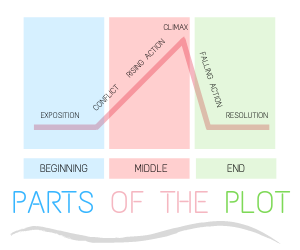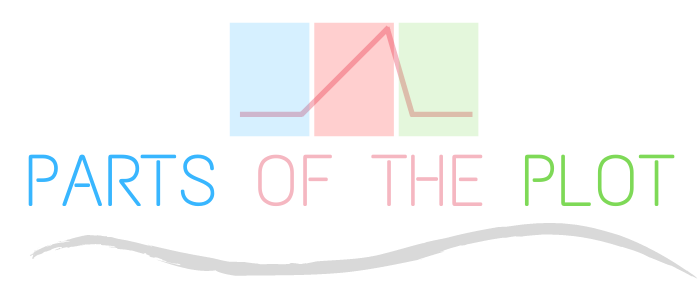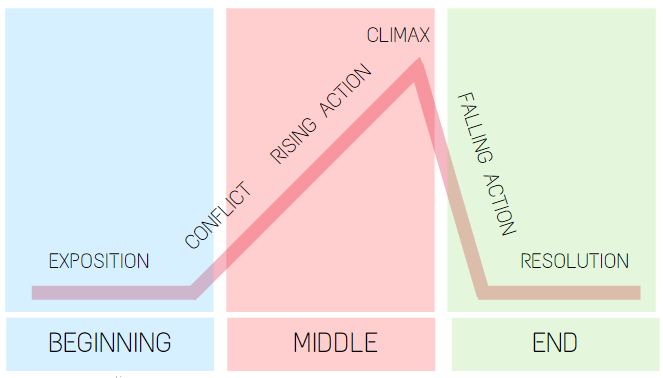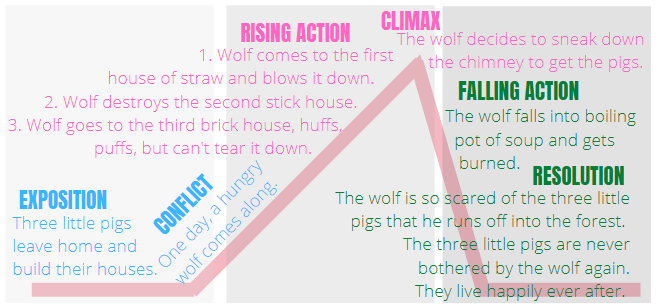|
Beginning: The beginning of a story captures the audience’s attention, introduces the characters, setting, and the central conflict.
Middle: In the middle of a plot are events that directly impact what happens next in the story. In other words, they introduce crisis points, obstacles, or various subplots along the way to maintain the audience’s interest.
End: The end of a story brings about conclusion and resolution of the conflict, generally leaving the audience with a sense of satisfaction, value, and deeper understanding.
Three little pigs leave home and build their houses.
Conflict
One day, a hungry wolf comes along.
Rising actions
- Wolf comes to the first house of straw and blows it down.
- Wolf destroys the second stick house.
- Wolf goes to the third brick house, huffs, puffs, but can't tear it down.
Climax
The wolf decides to sneak down the chimney to get the pigs.
Falling action
The wolf falls into boiling pot of soup and gets burned.
Resolution/Denouement
- The wolf is so scared of the three little pigs that he runs off into the forest.
- The three little pigs are never bothered by the wolf again.
- They live happily ever after.




